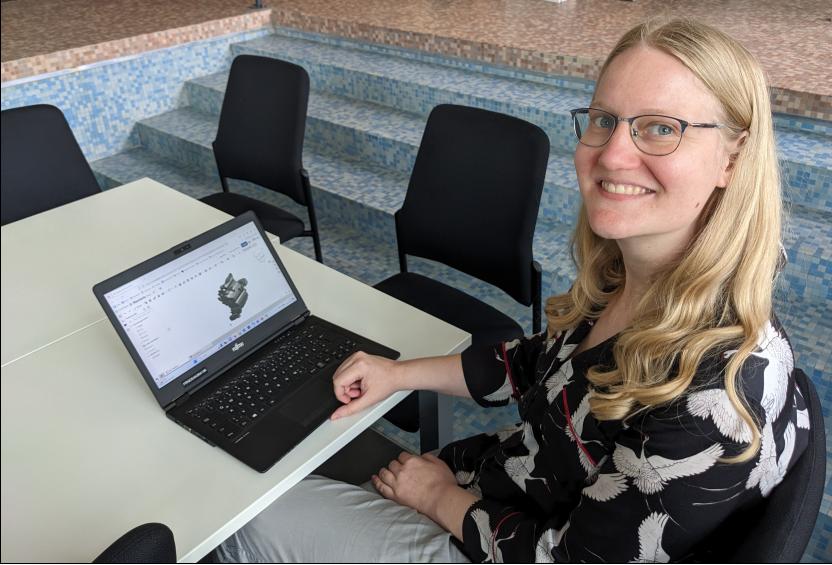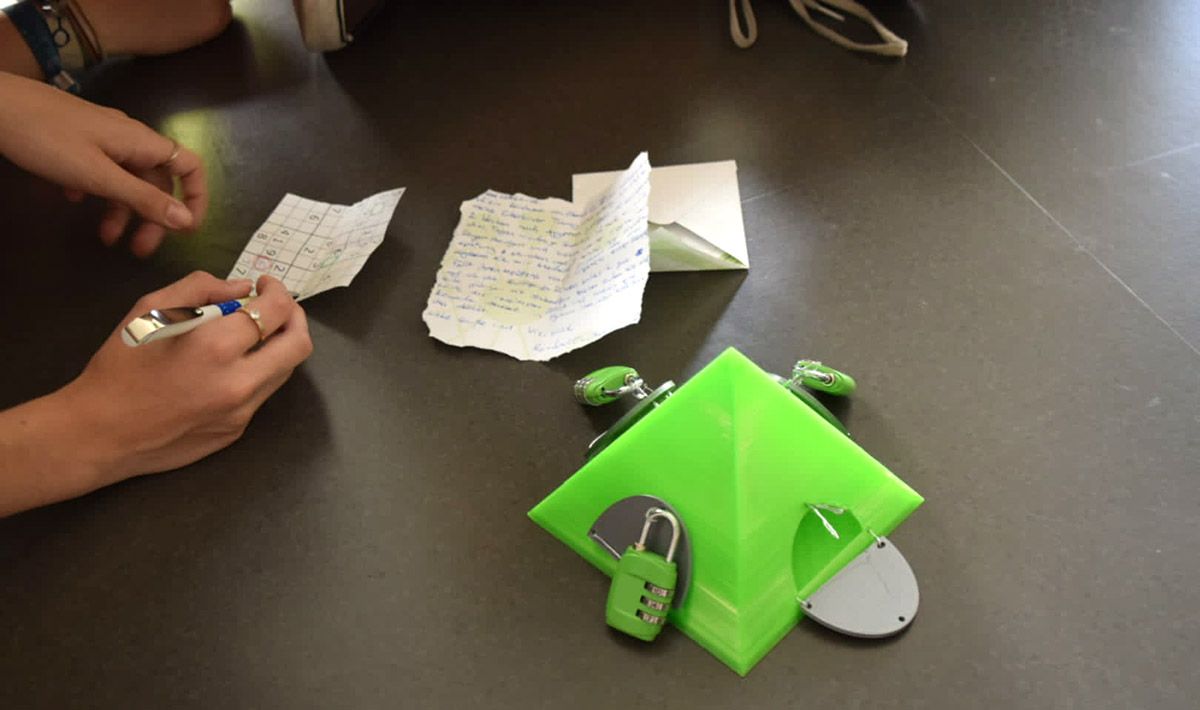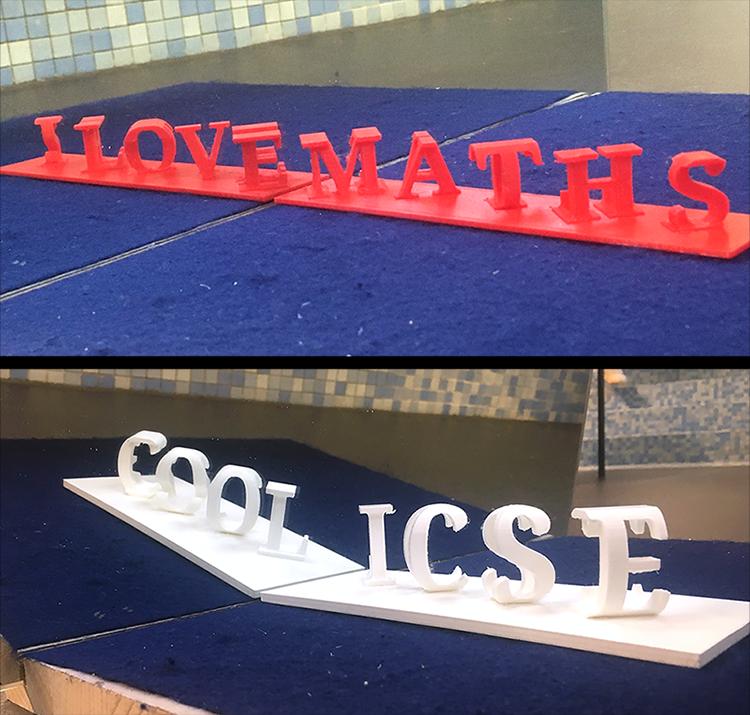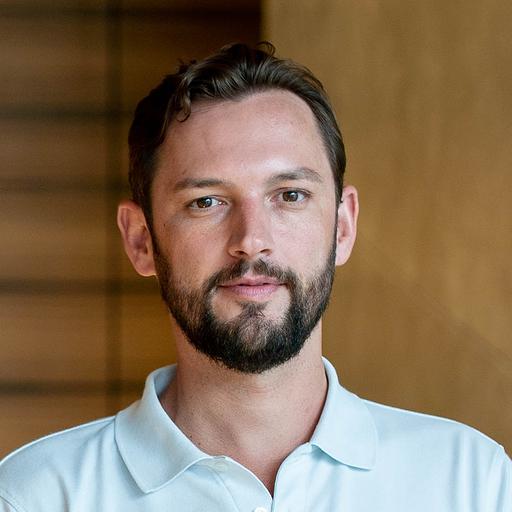
04:04
As a child, were you fascinated by light and shadow? Did you form shadow puppets on your bedroom walls – with each new figure, a story unfolding?
The relationship between light and shadow is a compelling subject that’s inspired enchanting bedtime stories as well as powerful lessons about society. Take, for example, Plato’s allegory “The Cave,” where images from the outside world reflect on the cave’s wall. Are they reflections of the real world or just a product of your own imagination?
Dr. Rahel Brugger from the International Centre for STEM Education (ICSE) at the Pädagogische Hochschule (PH) Freiburg in Germany brings our fascination with light and shadow to her classroom.

Inspiring Creativity with 3D Printing and CAD
Dr. Brugger has been teaching students how to use CAD at the PH Freiburg since 2022. One of the first projects she led during summer school challenged students to create fun objects to put in a small, portable escape box, including riddles and puzzles, as shown below.

As a mathematician who likes to craft, Dr. Brugger sees the benefits of combining STEM subjects with creative tasks to entice student learning.
By combining arts and creativity with math and 3D modeling, girls and boys alike are taking an interest in 3D printing courses.
Her workshops include projects on creating magic angle sculptures, which are 3D-printed objects that with the correct lighting angle create a shadow illusion of something entirely different. She also leads a project to create dual-letter illusions, another 3D-printed object that spells out a different word in the reflection of a mirror, as shown below.

Part of a Country-Wide STEM Initiative
Dr. Brugger is part of the ICSE at the PH Freiburg, which is well-known throughout Europe for making strides in project-based learning, socio-scientific issues, and diversity in the classroom.
Currently, the ICSE at the PH Freiburg coordinates with the MINT4Life program, which is part of the German Federal Ministry of Education and Research’s MINT-Aktionsplan – a government effort to prepare the future workforce. (MINT stands for mathematics, computer science, natural sciences and technology.)
The MINT4Life program’s goal is to grow student awareness of the importance of 3D printing. So far it has reached well over 2,000 students in total from elementary to high school.
As part of the program, the ICSE at the PH Freiburg runs a 3D printing lab with a free afternoon of hands-on activities. The lab also offers workshops to students and training for teachers in 3D design and printing.
ICSE helps coordinate other labs with academic partners including Offenburg University and the University of Freiburg. Partner workshops and labs exist in St. Georgen in the Black Forest (TZ St Georgen), in Achern (Illenau workshops), in Ohlsbach (Temopolis), in Gengenbach (Xenoplex student research center), and in Emmendingen (Alumitzium student research center).
These workshops have been and continue to be equipped and supplied with printers and consumables by the PH Freiburg. There is an exchange of ideas (e.g., workshops) and know-how (e.g., mutual training) between the different partners that enhances student learning.
CAD at the Heart of the Workshop

In Dr. Brugger’s workshop, students work to create 3D objects that have a “wow” factor. They have to understand the mathematics behind these optical illusion gadgets, learn how to design them, and what’s the best way to 3D print them.
Students have to ask themselves, what’s a word that can become another word in the mirror? A shapeless 3D mold that by turning it a few angles turns into something comprehensible through its shadow?
To play around with the object, students use 3D modeling software, namely CAD. While students can use any CAD software in the workshop, Onshape is highly recommended for its browser-based accessibility and intuitive interface.
Indeed, Onshape has magical features that can bring light into the shadow.
“In the workshop,” Dr. Bruggers says, “when for example designing the dual letter illusions, we tell the students that if they want to easily intersect sets or produce more advanced figures like the one in the video [shown below] they should try Onshape.”
With Onshape, the students will figure out the geometry of the design and how to create a sculpture on a computer giving them the power to 3D print it and take it home by the end of the workshop.
If you want to celebrate the creativity of your students and explore the topic of 3D printing and Onshape, make sure to check out the following stories:
- German Educator Creates Inventors’ Studio for Girls Interested in STEM
- With a Focus on Robotics in Education, French Teacher Preps Students for the Workforce of the Future
- In Germany, 3D Printing Workshops Grab Student Attention
Get Started with Onshape Education
Onshape for Education brings CAD out of the computer lab and into the modern era.
(Bernhard Eberl is the Onshape Education Customer Success Director Europe and PTC Wellness Ambassador.)
Latest Content

- Case Study
- Automotive & Transportation
Zero Crashes, Limitless Collaboration, One Connected Workflow With Cloud-Native Onshape
12.04.2025 learn more
- Blog
- Becoming an Expert
- Assemblies
- Simulation
Mastering Kinematics: A Deeper Dive into Onshape Assemblies, Mates, and Simulation
12.11.2025 learn more
- Blog
- Evaluating Onshape
- Learning Center
AI in CAD: How Onshape Makes Intelligence Part of Your Daily Workflow
12.10.2025 learn more
- Blog
- Evaluating Onshape
- Assemblies
- Drawings
- Features
- Parts
- Sketches
- Branching & Merging
- Release Management
- Documents
- Collaboration
Onshape Explained: 17 Features That Define Cloud-Native CAD
12.05.2025 learn more



